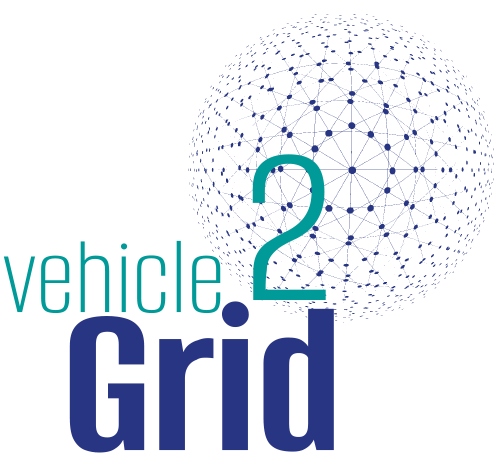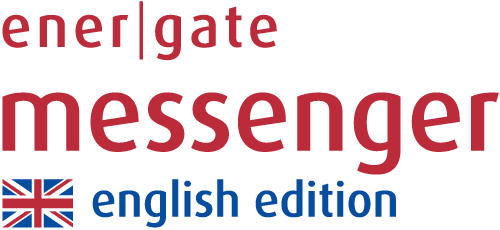

Save the Date:
10.–11. April 2024
Münster, Germany
Conference as part of the
Battery Conference 2024

Press release
- 10. November 2023
Bidirectional charging, vehicle to grid, vehicle to home, V2G, V2H
Bidirectional charging is of great importance for the energy transition. The powerful batteries of electric vehicles become a “power plant” for the entire country. The batteries in electric cars can thus stabilise our power grid and store clean electricity temporarily. The nationwide introduction is still a long way off, but intensive efforts are being made to realise this as quickly as possible.
How does bidirectional charging work?
Electric cars that can charge bidirectionally are able not only to charge energy into the traction battery, but also to discharge it again. The high-voltage battery of an electric car, designed for high performance and capacity, is also an ideal energy storage system for off-road applications. The battery of thousands of electric cars then becomes a buffer store for the power grid. The prerequisite is, of course, that the electric vehicles are connected to the grid.
This is because there are increasingly days in Germany when so much electricity is generated from renewable energies that it cannot be consumed. Wind turbines have to be switched off and PV systems throttled back. To avoid wasting this constantly growing energy potential, storage systems are needed that can absorb surplus energy at such times. On the other hand, there are days when the weather conditions barely allow for renewable energies. Then millions of electric cars can step in and release their energy again.
The first steps have already been taken by car manufacturers: more and more modern electric cars have what is known as a “vehicle to load” interface. The next step could be “Vehicle to Home” (V2H), in which the local household grid can be temporarily fed from the battery storage of an electric car. The ultimate goal is to be able to feed electricity into the public grid beyond the local grid, which is referred to as “Vehicle to Grid” or bidirectional charging. This also opens up economic opportunities if, for example, PV system operators can feed the energy stored in the car during the day back into the grid at night in return for a feed-in tariff.
The removal of technical, legal and organisational hurdles should make bidirectional charging possible as soon as possible. This is where politics and standardisation come into play. Other countries are already further along in some cases.
The effective implementation of bidirectional charging requires the utilisation of various relevant energy and vehicle data. This includes information on the status of the power grid and the available capacity of the vehicle battery in kilowatt hours for feeding electricity back into the grid. Various work processes are already underway at European level to standardise the provision of such data. One example of this is the newly introduced EU Battery Regulation. Nevertheless, further progress is needed, particularly with regard to harmonisation and security, e.g. in the area of data and grid access and with regard to data protection aspects.
Contact:
Dipl.-Ing. Bernd Hömberg
+49 201 18 03-249
b.hoemberg@hdt.de
Haus der Technik (short HDT) has been established in 1927 rooted on an idea by Heinrich Reisner, an engineer working in the coal mining and steel milling area around Essen, Oberhausen, Bochum and Gelsenkirchen, later referred to as the „Ruhrgebiet“ (Ruhr Area).
The present HDT is a non-profit organization and as such it is still following the original track laid out a good 90 years ago: to distribute new scientific and technical insights and to establish working knowledge around present and upcoming technology across the various disciplines.
As of this year we are exploring even more channels to fulfill our mission, for we are offering a seamless interaction at personal face-to-face meetings as well as at our remote digital seminars and conferences. The platform independent digital campus offered through hdt/plus, is offering access on PCs, Macs, iOS and Android.
A vast group of more than 1000 hand-picked experts from all backgrounds and technical expertise offers a program that draws up to 15000 users every year in year out. Practical experience is being complemented by scientific excellence through our close collaboration with top universities and research institutes throughout the country and Europe.
Press release
- November 10th, 2023
Conference
Vehicle-to-Grid, Vehicle-to-Home und Smart Charging
April 10-11, 2024 in Münster
The sum of battery capacity that is installed in BEV’s exceeds any other storage that is currently connected to the grid. With the growing electrification of virtually all road vehicles – cars, trucks, and buses – an equally rising number of vehicles will become available and will offer flexibility. To utilize this potential, several concepts are applied, such as vehicle-to-grid, vehicle-to-home and smart charging. By charging when electricity is abundant and possibly discharging when it is scarce, electric vehicles are able to overcome one of the key challenges of the renewable energy transition: the need for storage capacity.
In combining vehicles to render virtual power plants a higher power rating is achieved than conventional power plants will be able to offer. Through such „power plant swarms“, the grid can be stabilised given bidirectional charging is applied. This no longer is mere vision as as shown by the numerous activities of vehicle manufacturers, operators of grid and charging stations as well as billing companies.
Unlike a conventional combustion engine vehicle, any electric vehicle is able to perform an important function such as smart charging during idle time, provided it is connected to a charging station. The argument that traction batteries of electric vehicles are unsuitable for this has now been refuted by studies, provided the operating logic respects the limits and boundaries of vehicles. “For economic and ecological reasons, we cannot afford in future not to use the controllable potential of 100 or more gigawatts that will be available via e-vehicles by 2030 for grid stabilisation,” according to Dipl.-Ing. Bernd Hömberg, responsible theme manager for automotive and energy, at HDT, Germany’s oldest technical training institute.
The revenue potentials of the various possible applications such as smart charging (V1G), vehicle-to-home (V2H), vehicle-to-grid (V2G) will be richly discussed in the conference. These developments put current legislation under pressure to allow increased operating modes, to enlarge the grid and make the integration of more renewable energy sources feasible. Open protocols are necessary, and, of course, additional care must be taken to protect them from potential cyberattacks. Ultimately, the goal of such activities is to enable novel business models where companies can compete to utilize the batteries’ flexibility as much as possible while respecting user comfort.
One of the most important actions to be taken is a widely available private and public charging infrastructure. It is also relevant trying to make the use of electric vehicles attractive to everyone and to exploit the potential of an electrical grid stabilisation. This would support the commitment to achieve CO2 reduction targets. Public support could provide additional incentives.
The technology itself is already in advanced stage. Apart from removing some legal obstacles, the relevant key-players such as vehicle manufacturers, grid operators, power suppliers, telecommunications companies as well as companies managing the billing and metering process to offer innovative business models.
Contact:
Dipl.-Ing. Bernd Hömberg
+49 201 18 03-249
b.hoemberg@hdt.de
Haus der Technik (short HDT) has been established in 1927 rooted on an idea by Heinrich Reisner, an engineer working in the coal mining and steel milling area around Essen, Oberhausen, Bochum and Gelsenkirchen, later referred to as the „Ruhrgebiet“ (Ruhr Area).
The present HDT is a non-profit organization and as such it is still following the original track laid out a good 90 years ago: to distribute new scientific and technical insights and to establish working knowledge around present and upcoming technology across the various disciplines.
As of this year we are exploring even more channels to fulfill our mission, for we are offering a seamless interaction at personal face-to-face meetings as well as at our remote digital seminars and conferences. The platform independent digital campus offered through hdt/plus, is offering access on PCs, Macs, iOS and Android.
A vast group of more than 1000 hand-picked experts from all backgrounds and technical expertise offers a program that draws up to 15000 users every year in year out. Practical experience is being complemented by scientific excellence through our close collaboration with top universities and research institutes throughout the country and Europe.







